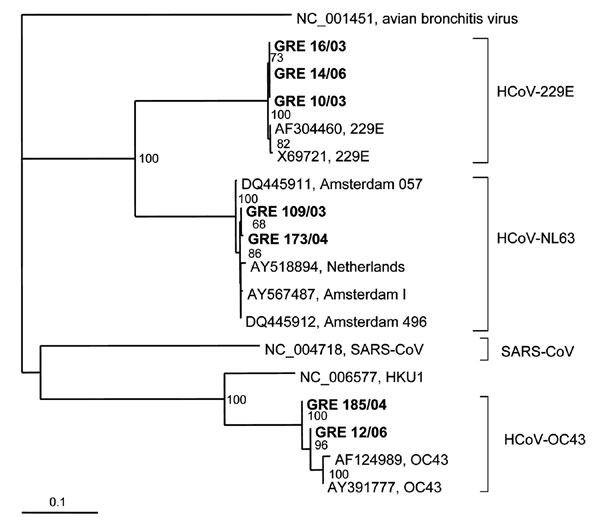Volume 13, Number 6—June 2007
Letter
Coronaviruses in Children, Greece
Appendix Figure

Appendix Figure. Phylogenetic tree based on a 400-bp genome fragment of the polymerase gene of coronaviruses, including sequences from the present study (in boldface). Numbers at nodes represent the percentage of 100 bootstrap replicates that contained the cluster distal to the node. Bootstrap values >60% are indicated. HCoV, human coronavirus; SARS, severe acute respiratory syndrome.
Page created: July 01, 2010
Page updated: July 01, 2010
Page reviewed: July 01, 2010
The conclusions, findings, and opinions expressed by authors contributing to this journal do not necessarily reflect the official position of the U.S. Department of Health and Human Services, the Public Health Service, the Centers for Disease Control and Prevention, or the authors' affiliated institutions. Use of trade names is for identification only and does not imply endorsement by any of the groups named above.